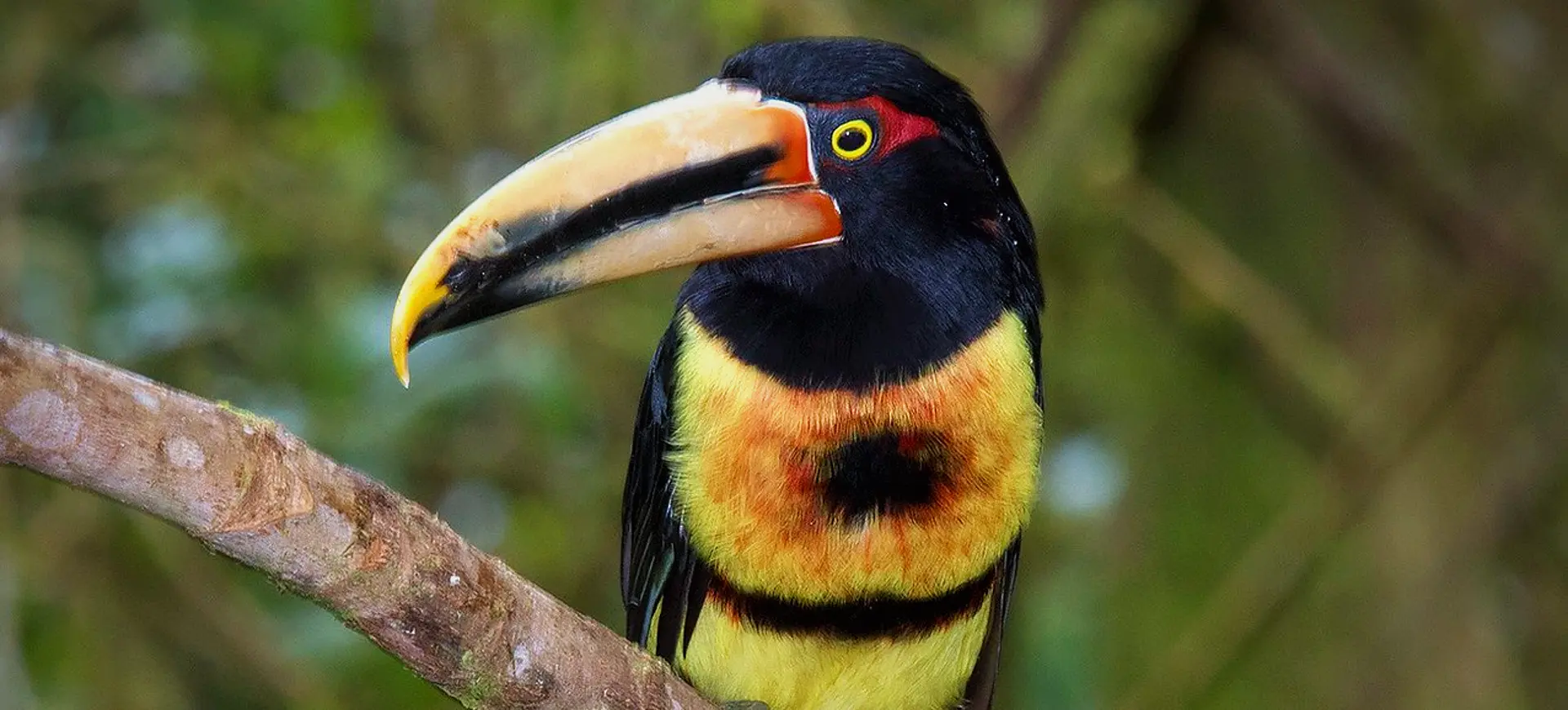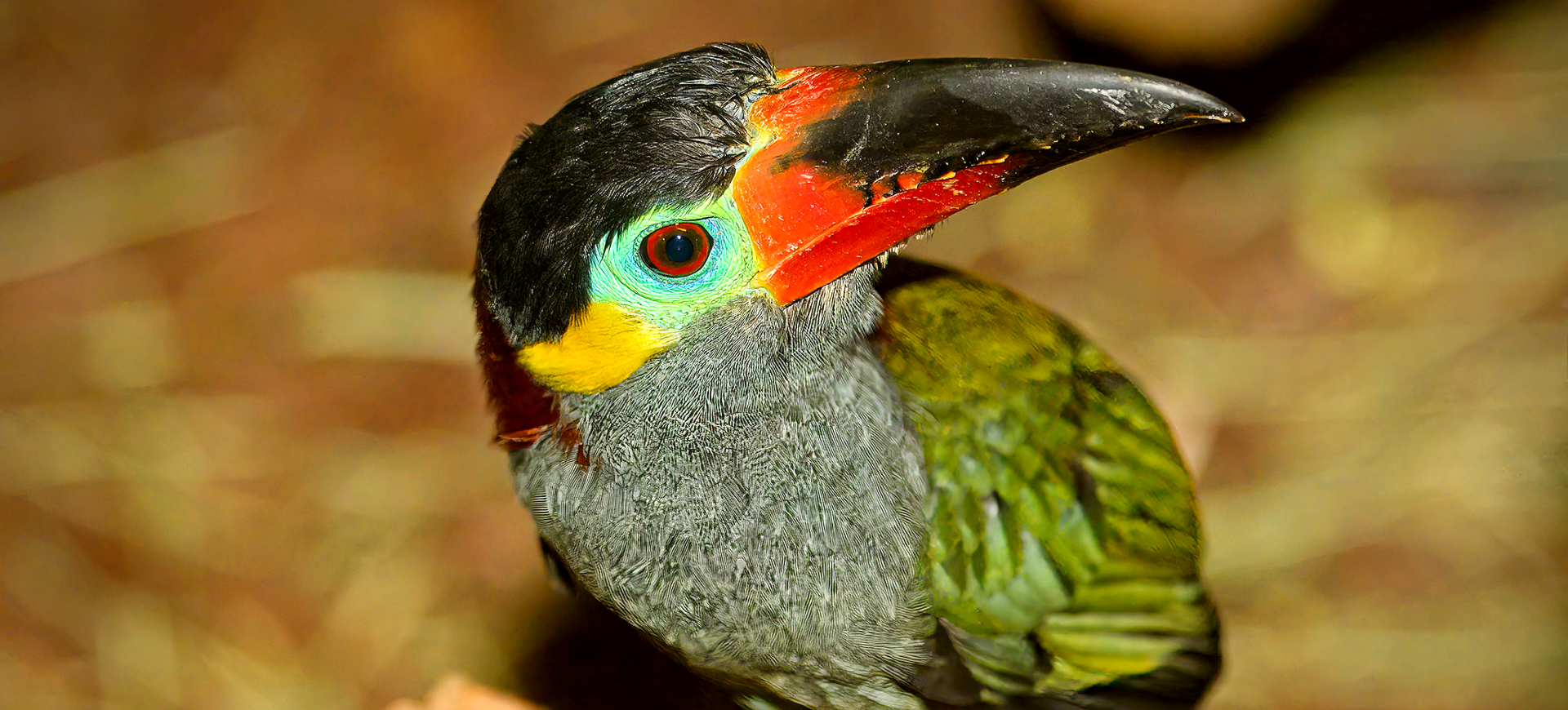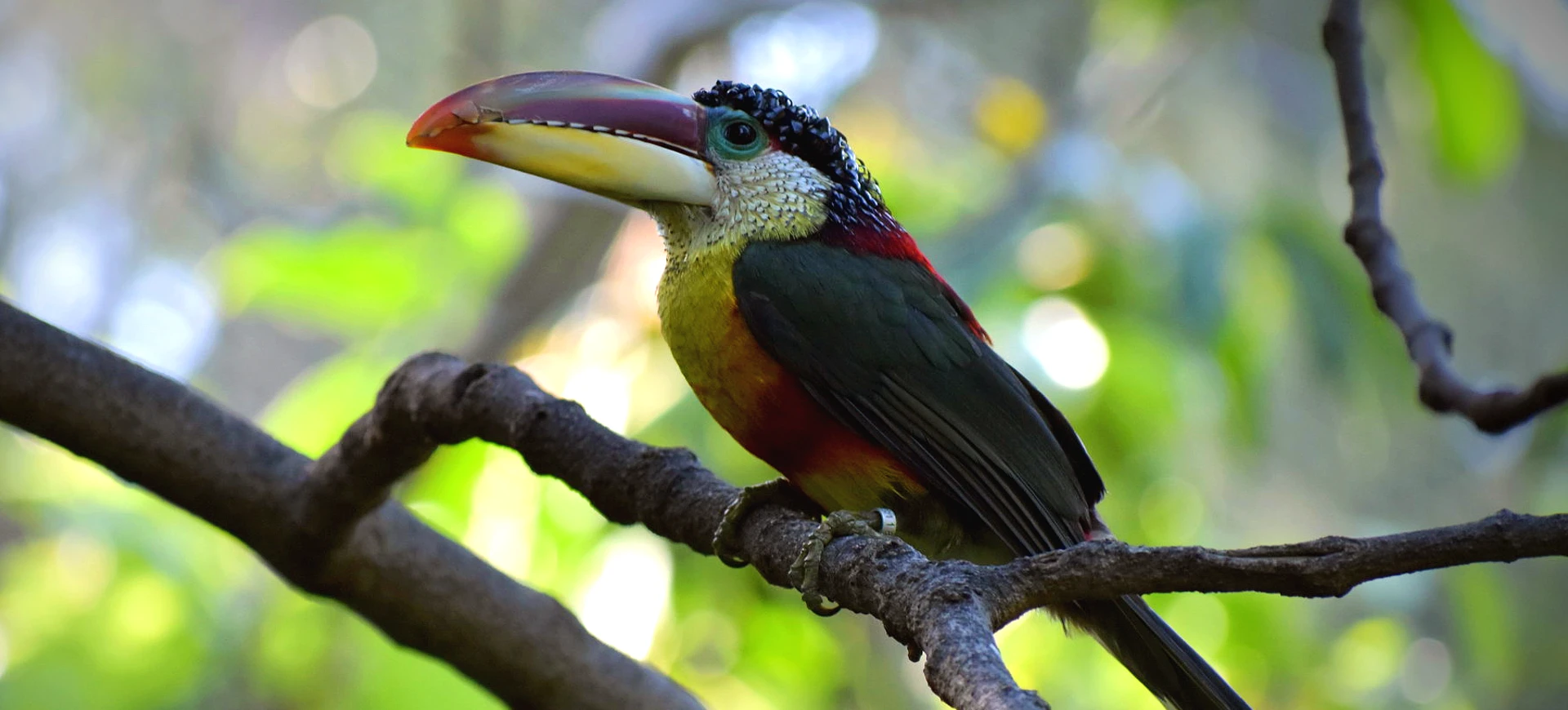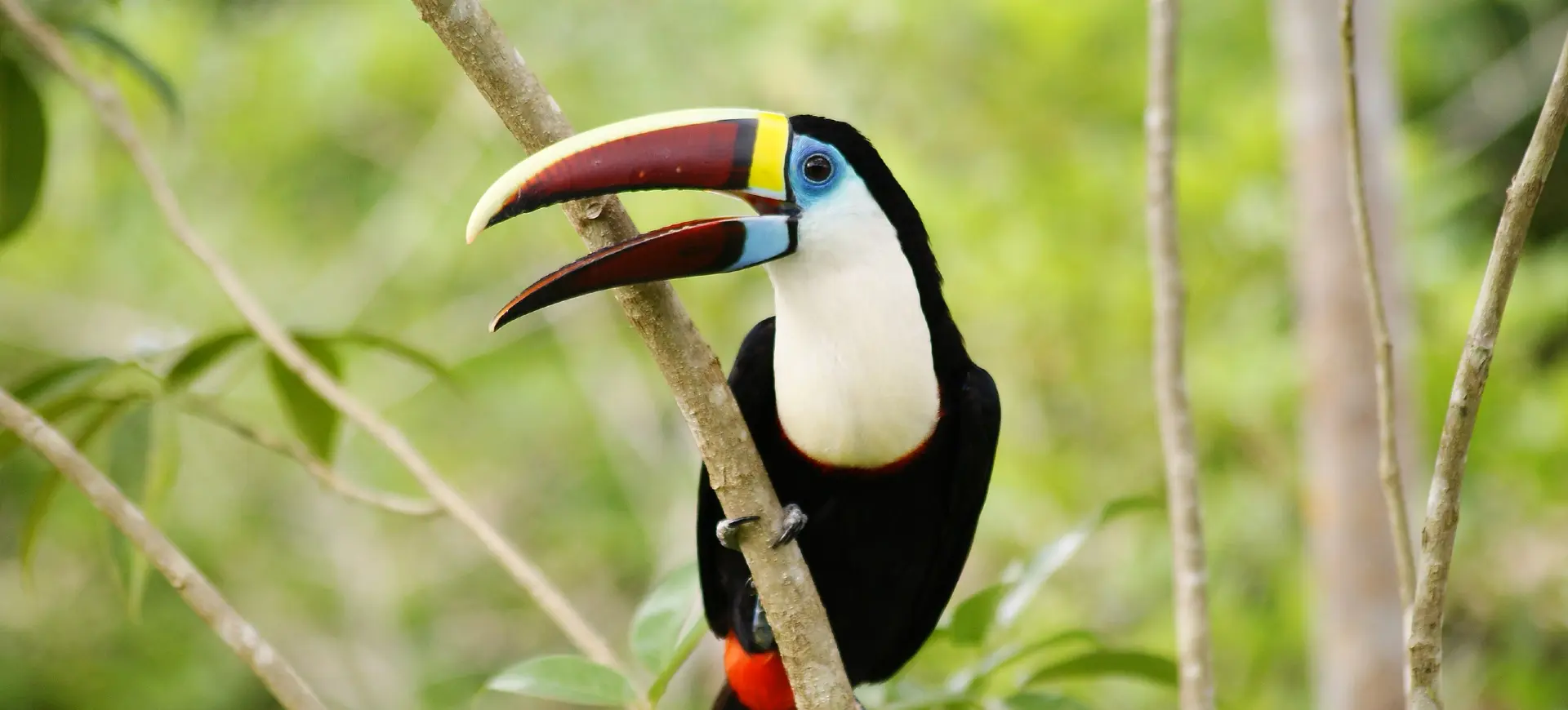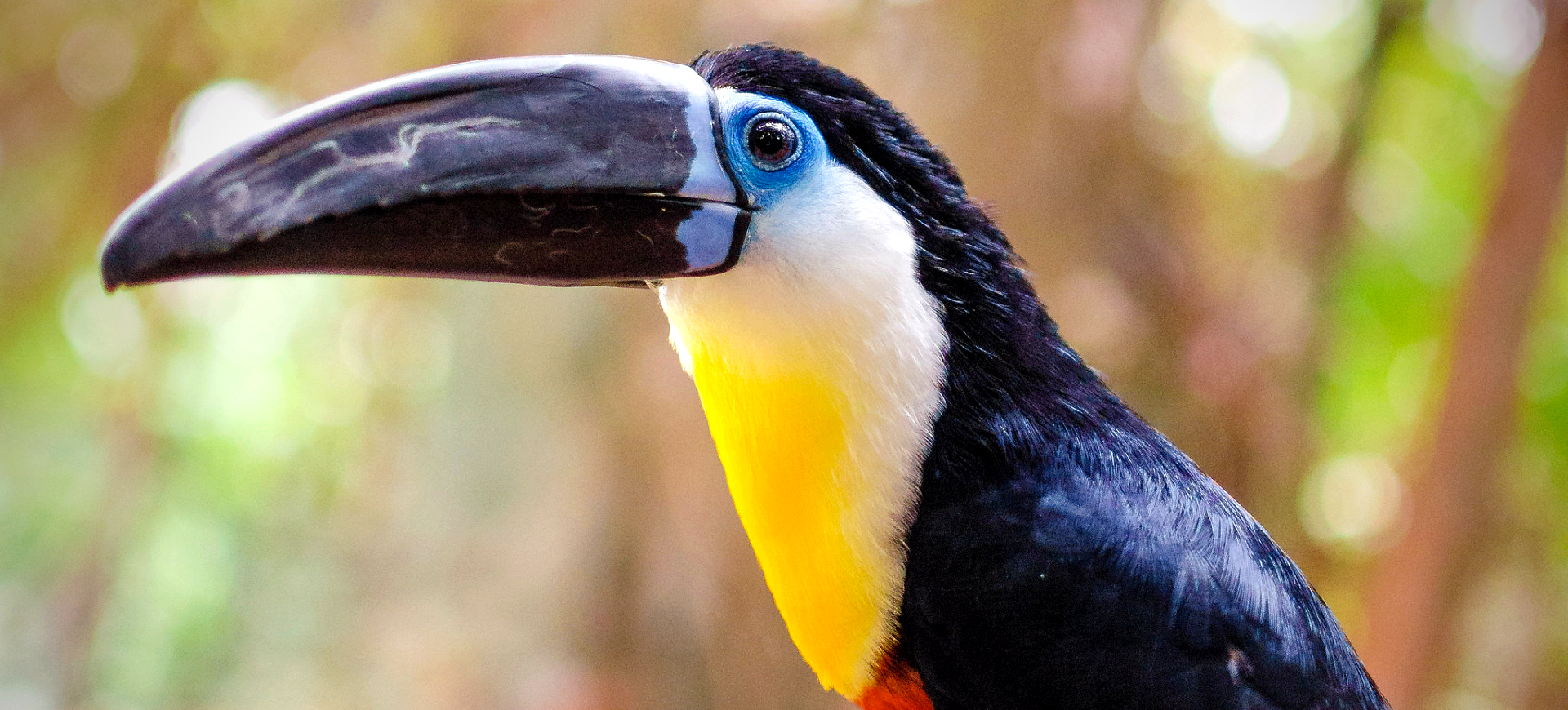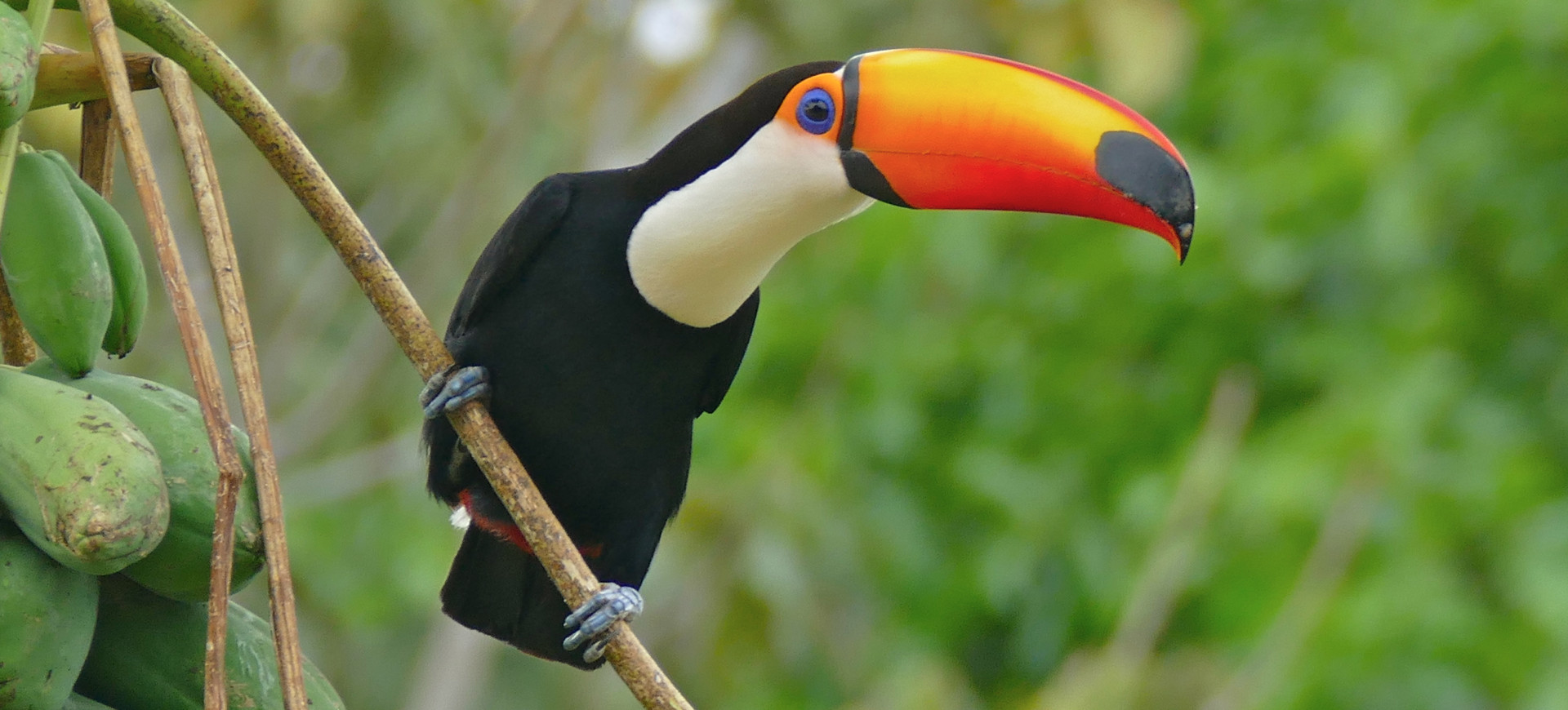Overview
The Keel-billed Toucan, known for its strikingly colorful bill, is a vibrant bird native to Central and South America. Its distinct bill, which can be as long as 20 cm, is a kaleidoscope of green, red, blue, and yellow hues, making it one of the most recognizable birds in its habitat. The body of the toucan, predominantly black with a yellow throat and chest, contrasts sharply against its bill.
Despite its large bill, the Keel-billed Toucan is remarkably agile. It uses its bill for a variety of purposes, including feeding, mating rituals, and as a tool for intimidation against predators. The bird’s diet primarily consists of fruits, but it occasionally feeds on insects and small lizards, showcasing its opportunistic feeding behavior.
The toucan’s social behavior is intriguing. These birds are usually found in small flocks and are known for their playful and noisy nature. Their vocalizations, resembling a frog-like croak, are common in their natural habitat, often echoing through the rainforests. This social aspect is crucial for their survival, as it plays a significant role in their mating and foraging habits.
Taxonomy
Kingdom
Phylum
Class
Order
Family
Genus
Species
Type
Physical Description:
The Keel-billed Toucan is a medium-sized bird, notable for its large, colorful bill. The bill is a visual hallmark and surprisingly light, owing to its porous structure. This feature enables the toucan to maintain balance despite the size of the bill. The plumage of this bird is primarily black with a bright yellow throat and chest, adding to its distinctive appearance.
The legs and feet of the toucan are strong, aiding in gripping branches while it hops around the treetops. Its tail is red and rounded, and the skin around its eyes is blue, adding to its colorful appearance. These physical characteristics are not just for show; they play a crucial role in the bird’s survival, aiding in feeding, mating, and territorial displays.

Lifespan: Wild: ~15 Years || Captivity: ~25 Years

Weight: Male: 14-18 lbs (6.4-8.2 kg) || Female: 13-17 lbs (5.9-7.7 kg)

Length: Male & Female: 17-22 inches (43-56 cm)

Height: Male & Female: 20-24 inches (50-60 cm)

Wingspan: Male & Female: 43-60 inches (110-152 cm)

Top Speed: 20 mph (32 km/h)
Characteristic:
Native Habitat:
The Keel-billed Toucan predominantly inhabits tropical rainforests, often found in the canopy layer. These habitats provide the perfect blend of food sources and nesting sites, crucial for the survival of these birds. The dense foliage offers protection from predators, while the abundance of fruiting trees ensures a steady food supply.
Their preference for high canopies doesn’t limit their range to rainforests alone; toucans are also found in other forested areas, including plantations and gardens with large trees. This adaptability has been key to their survival in regions with prevalent deforestation and habitat fragmentation.
Climate Zones:
Biomes:
WWF Biomes:
Biogeographical Realms:
Continents:
Diet:
Diet & Feeding Habits:
The Keel-billed Toucan’s diet is predominantly frugivorous, mainly consisting of various tropical fruits. This diet is supplemented by occasional intake of insects, small reptiles, and bird eggs, showcasing the bird’s opportunistic feeding habits. The large bill is not just a display feature; it’s a highly effective tool for foraging and feeding. It allows the toucan to reach and gather fruits from branches inaccessible to other birds.
In their natural habitat, Keel-billed Toucans play a pivotal role in forest ecology. They are vital for seed dispersal, as the seeds of the fruits they consume are spread through their droppings. This contributes significantly to the regeneration of forest areas, underlining the ecological importance of these birds beyond their visual appeal.
Mating Behavior:
Mating Description:
A display of vibrant colors and loud calls characterizes the mating rituals of the Keel-billed Toucan. Males often use fruit tossing as a courtship behavior, throwing fruits at the females. This ritual not only displays the male’s ability to provide food but also showcases his skill and strength, both desirable traits for a mate.
Nesting occurs in tree cavities, where the female lays two to four eggs. Both parents participate in incubation, reflecting a cooperative approach to raising offspring. This shared responsibility strengthens pair bonds and ensures a higher survival rate for the chicks.
Reproduction Season:
Birth Type:
Pregnancy Duration:
Female Name:
Male Name:
Baby Name:
Social Structure Description:
Keel-billed Toucans are social birds, often found in small flocks. These groups provide safety in numbers, as the birds can alert each other to the presence of predators. Social interactions within these groups are complex, involving various vocalizations and physical displays.
The social structure of toucans is also evident in their cooperative breeding behavior. The shared responsibility of raising offspring and defending territory is a key aspect of their social dynamics. This cooperation enhances the survival rate of the chicks and strengthens social bonds within the group.
Groups:
Conservation Status:
Population Trend:
The Keel-billed Toucan’s population is currently stable in the wild, though it faces threats from habitat loss and the illegal pet trade. These birds have a significant presence in their natural range, often seen in groups, aiding their survival. They have a relatively broad distribution, which helps mitigate the impact of localized threats.
In regions where deforestation is prevalent, toucan populations are at risk. The loss of their natural habitat reduces their food sources and exposes them to predators and human conflicts. Conservation efforts are essential to ensure the sustainability of the populations in these areas.
Population Threats:
Habitat destruction is the primary threat facing Keel-billed Toucans. Deforestation for agriculture and urban development has led to a loss of their natural habitat, impacting their food sources and nesting sites. Additionally, these birds are often captured for the illegal pet trade, further exacerbating the threat to their populations.
Climate change also poses a significant threat to the toucan’s habitat. Changes in temperature and rainfall patterns can affect the fruiting cycles of trees, disrupting the bird’s food supply. The cumulative impact of these threats necessitates urgent and effective conservation measures to protect these iconic birds.
Conservation Efforts:
Conservation efforts for the Keel-billed Toucan include habitat protection and restoration and initiatives to combat the illegal pet trade. Protected areas and wildlife reserves are crucial in providing safe habitats for these birds. Reforestation projects help restore degraded areas, ensuring food availability and nesting sites.
Education and awareness campaigns are also vital, aiming to reduce the demand for toucans in the pet trade and to promote conservation efforts among local communities. These combined efforts are essential for the long-term survival of the Keel-billed Toucan.
Additional Resources:
Fun Facts
- The Keel-billed Toucan’s bill is made of keratin, the same material as human hair and nails.
- Despite its size, the toucan’s bill is light and not used for digging or heavy labor.
- Toucans can live up to 20 years in the wild.
- Their vibrant bill colors may affect mate attraction and species recognition.
- Toucans are known for their loud, frog-like calls.
- They have zygodactyl feet, with two toes facing forward and two backward.
- Toucans are important seed dispersers in their ecosystems.
- They can’t fly long distances and prefer to hop between trees.
- Toucans are often featured in Central and South American mythology.
- The Keel-billed Toucan is the national bird of Belize.





